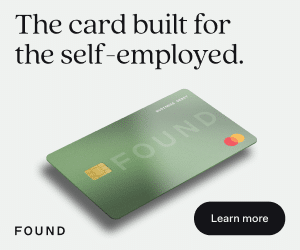Many of us start our own company without any marketing knowledge. So when it comes time to design a website, we are often tasked with a skill set entirely unfamiliar to us.
Since your website is typically your clients’ first point of contact with your brand, you want to be sure to create a lasting impact from the first click.
There is often a disconnect between the vision we have of our site and the developing skills we need to create it. Luckily, there are now plenty of easy tools to seamlessly create a stunning and engaging website — from buying your domain name to publishing it live.

Get Weekly Freelance Gigs via Email
Enter your freelancing address and we'll send you a FREE curated list of freelance jobs in your top category every week.
In order to master that first impression, keep these points in mind while designing your site:
Find the right domain name
There are a few considerations when choosing your domain name.
It needs to be:
- Available to purchase: Make sure someone doesn’t already own your preferred name.
- Affordable: Remember prices vary depending on the attractiveness of your name.
- SEO friendly: Consider how your domain could affect your Google ranking.
- Easy to remember: Make sure it’s easy to spell and quickly memorable.
Remember .coms aren’t your only option. If you want to stand out from the crowd and use your domain name to promote your creativity, pick a .design name instead. It gives you the freedom to come up with clever names like my friend’s website: thereisno.design. Catchy right? Your prospects surely won’t forget a name like that. So, now that you bought a domain name, here’s what to do next.
Find the right tool for your website
If you don’t have extensive web development skills, you want to start with the easiest option possible. Thankfully, there are a few all-in-one tools available on the market.
For example, if you decide to go with Flywheel, at the most basic level, the TINY plan ($13) is great for portfolio sites. The next step up from this is the STARTER package ($25) which supports freelancers and personal blogs with traffic levels of up to 25k visits per month. Finally, if you have a service site or an e-store, then you will want to choose their FREELANCE plan ($96) which can support a hundred thousand visits per month and allows you to create ten sites on one monthly subscription (meaning after your first account is set up you can continue to expand your business).
If you are looking for a more custom tool with advanced capabilities, you can always build your own website through WordPress. It really depends on your knowledge and how much time you are willing to dedicate to design.
Alternatively, you can also try web hosting solutions like Bluehost and WPEngine.
Learn as you go
I have never learned so much as I did when building my own website from scratch. While there are plenty of handy templates readily available, if you want to evolve and take a more customized approach, you will need to learn a few basics of web development.
I was personally very interested in the topic so I used some free resources like W3 Schools for basic CSS help or WPBeginner to get started with WordPress.
When I came across more complicated fields, I relied on local and online courses to make sure I was on the right track.
I would advise you to take on one technical challenge or small improvement at the time and remember that your website might always be a work in progress. The key is to publish the Minimum Viable Product, as they call it in the software industry. What is the minimum you can do to feel good about your website? Publish that version first. Then progressively work toward your ideal version, one learning step at a time.
Know when it’s time to get help
At some point, you might not have the time or willingness to learn new skills, especially if they don’t align with your professional services. You may want to capitalize on the other resources at your disposal.
Freelancer platforms such as Upwork, offer remote access to a talented pool of designers eager to help with your project. Quick, convenient, and reasonably priced, these platforms allow you to get the job right the first time around. By outsourcing your web design, you can then focus on what matters most: your clients, prospects, and business at large.
Always keep your goal in mind
To ensure you correctly prioritize the time and resources you want to spend on your website, ask yourself this question: does it align with my goals?

Whether your main goal for this website is to showcase your incredible skills or keep in touch with your client base, be sure to remind yourself of your priorities and how they translate into actionable decisions.
Monitor your website data with Google Analytics, for instance, to make sure your site is optimized for your goal, be it a certain number of sales or site views. It will also give you great insights into how you can improve over time.
You can do this!
I know it may seem daunting, but the process is far less scary when you approach it step by step. You don’t need everything to be perfect and ready immediately. Just start simple and you will get the hang of it.
Hopefully you can use these tips to guide you through the process. Remember: There is nothing as rewarding as building your personal website and sharing your ideas with the world, so have fun with it!

Keep the conversation going...
Over 10,000 of us are having daily conversations over in our free Facebook group and we'd love to see you there. Join us!



